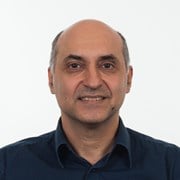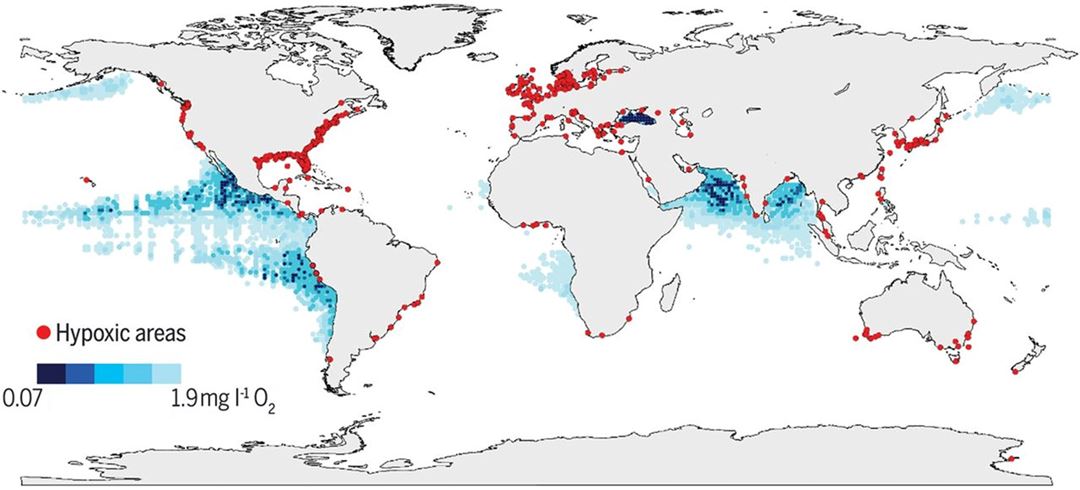The wastewater from rural, agriculture and inland urban areas is a main source for land/water pollution, and a major challenge for downstream users. The pollution is characterized by organic and inorganic contaminants that originate with dissolved contents of fertilizers, chemical runoff (pesticides), urban cleaning agents, human waste, livestock manure and nutrients. Climate change exacerbates oxygen decline in coastal systems through similar mechanisms as those in the open ocean, as well as by increasing nutrient delivery from watersheds that will experience increased precipitation. Expansion of low-oxygen zones can increase production of N2O, a potent greenhouse gas.
The challenges addressed in BLUE-GREENWAY can only be tackled through a cooperative, coordinated, transnational approach between European countries on common European challenges. In addressing these challenges, major advances have been provided by ocean engineering. Improved numerical models of oceanographic processes that control oxygen depletion are needed to predict the magnitude and patterns of deoxygenation in the sea. Norway is a leader in this research. Our expertise partners (SINTEF Ocean and Fugro Oceanor) will guide us in establishing real time monitoring, early warning systems and modern numerical models.
BLUE-GREENWAY addresses the intertwined common challenges of the sea-land chain by treating the pollution problems of eutrophic and anoxic coastal ecosystems (sea) that result from land-based and other pollution sources and by focusing on green procurement of products and services in wastewater management (land).
The main objective is to address these challenges via a dual approach.
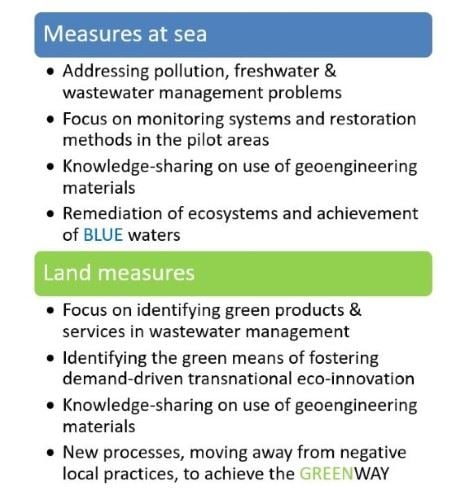
The main involvement of SINTEF Ocean (Marine Modelling and Analysis group) is in Work Package (WP) 4: Water Quality. Monitoring, Forecasting and Treatment, where "A hydrodynamic and an ecological model will run for the Aitoliko pilot and they will be simulated using SINMOD, a marine model, which is a coupled 3D hydrodynamic and biological model. Evaluation of SINMOD model results will be performed based on observed events. We will also identify the relation between lifting of anoxic water and physical forcing. Report will be delivered describing the model setup, simulations and modelled dynamics. The significance of the modelled dynamics with regard to the development of anoxic conditions in the system will be discussed, and guidelines for surveillance and early warning of water exchange events will be given.".
In trying to do so, SINMOD is run in a cascade of implementations with final aim the area of Aitolikon lagoon. First, the model has run in a double nested setup with an outer grid of 20 km resolution for the North Atlantic, which gave input to another grid for the Mediterranean with 4 km resolution, which again gave input to a finer grid with resolution 800 m of the Ionian Sea. The new grid for the Gulf of Corinth has 160 m resolution, and the final grid in the Messolonghi and Aitolikon lagoons will be 32 m. See Figures 1-2.
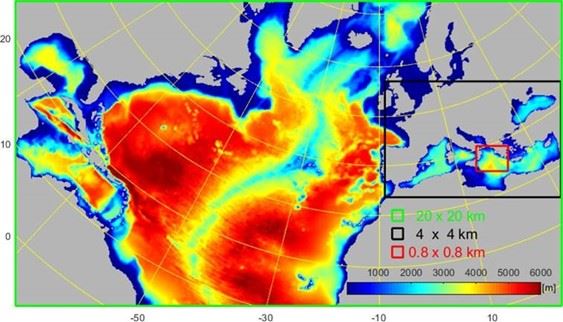
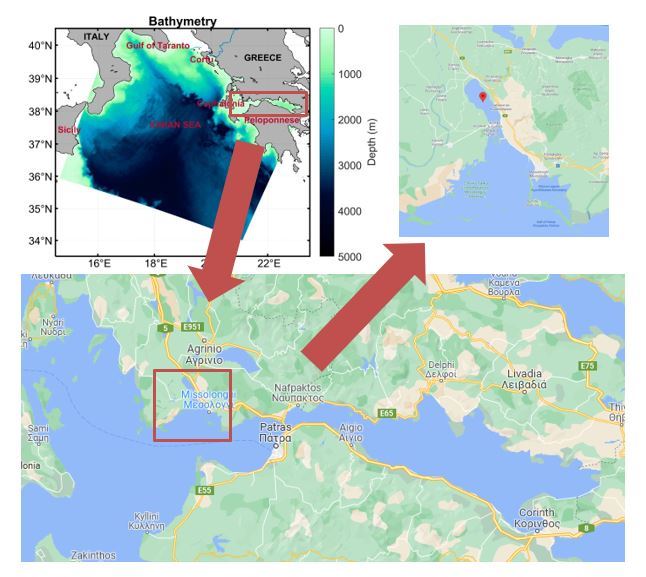
Other input includes ERA5 atmospheric forcing, as well as information concerning freshwater influx (main rivers).
It is recalled that SINMOD is a 3D ocean model, developed and maintained at SINTEF since 1987, where hydrodynamics, ecology, and sea ice are fully coupled. For a comprehensive description, see: Slagstad D and McClimans TA (2005). Journal of Marine Systems, 58, 1–18.
An ecosystem model based on light and nutrients supply calculates biological production. The faith of the produced organic material and its degradation and use of oxygen is simulated and presented.
The analysis results include general circulation and monthly, annual and interannual variability of fields of temperature, salinity, currents and wind at sea surface, and diagonal cross-sections.
First results have been published in:
- Knutsen, Ø., Stefanakos, Ch.N., Slagstad, D., “Ocean current conditions in the Ionian Sea”, 31st International Offshore and Polar Engineering Conference, ISOPE’2021, Online/Virtual Conference June 20-25, 2021.
- Knutsen, Ø., Stefanakos, Ch.N., Slagstad, D., “Ocean current conditions in the Gulf of Corinth, Greece”, 41st International Conference on Ocean, Offshore and Arctic Engineering, OMAE'2022, Hamburg, Germany, June 5-10, 2022.
Click on the links below to view videos of the paper results:
- IONIAN Seas monthly temperature
- IONIAN Seas monthly wind
- IONIAN Seas monthly salinity
- IONIAN Seas monthly currents
- IONIAN Seas monthly
For more information, visit project's webpage
Social Media Accounts
Facebook
Blue Greenway
@eeabluegreenway
https://www.facebook.com/eeabluegreenway
Twitter
Blue Greenway
@BlueGreenway
https://twitter.com/BlueGreenway
Instagram
Blue Greenway
@eeabluegreenway
https://www.instagram.com/eeabluegreenway/
YouTube
Blue GreenWay Project
https://www.youtube.com/channel/UCsMDg-uztLQjXu3bSpoHgVg
